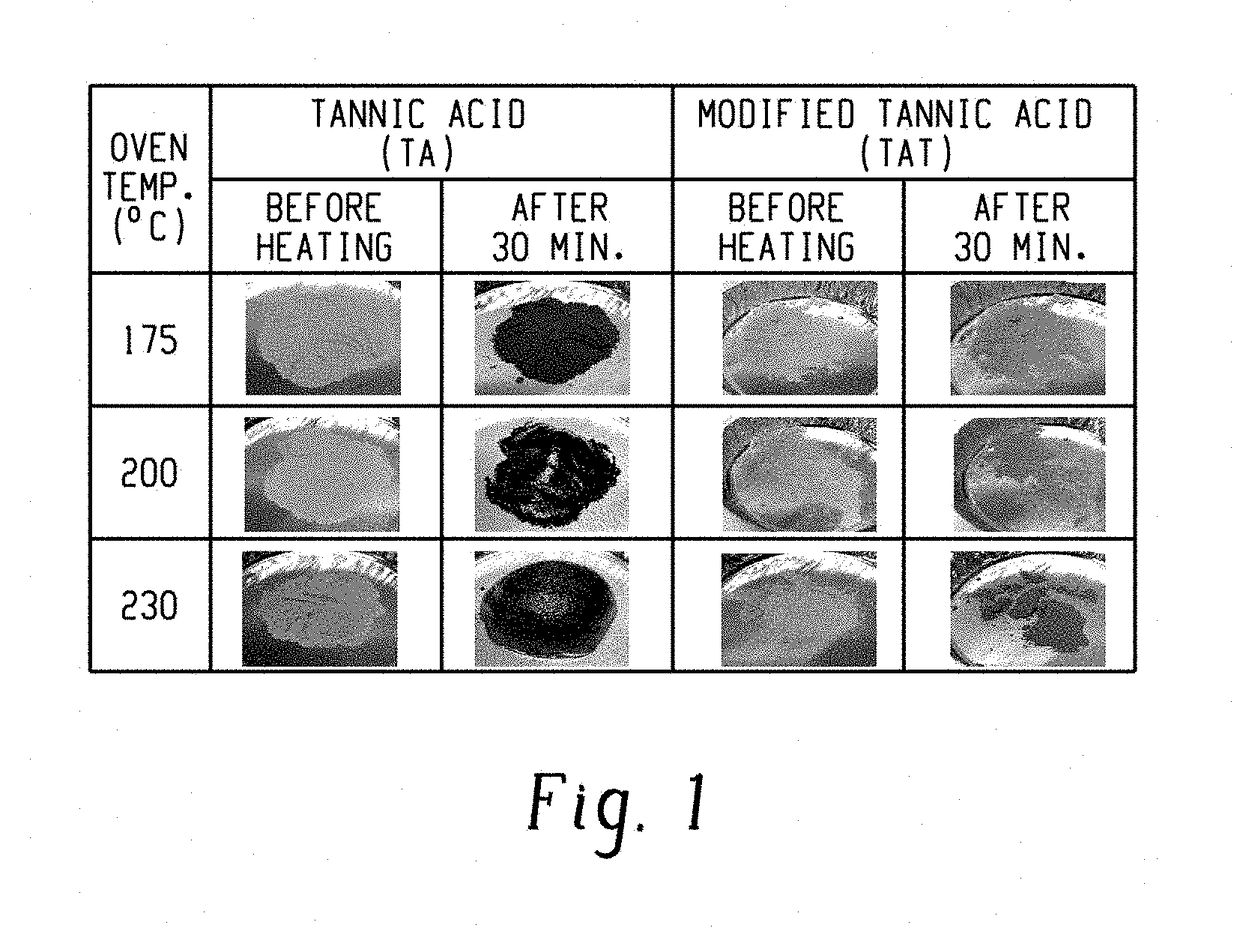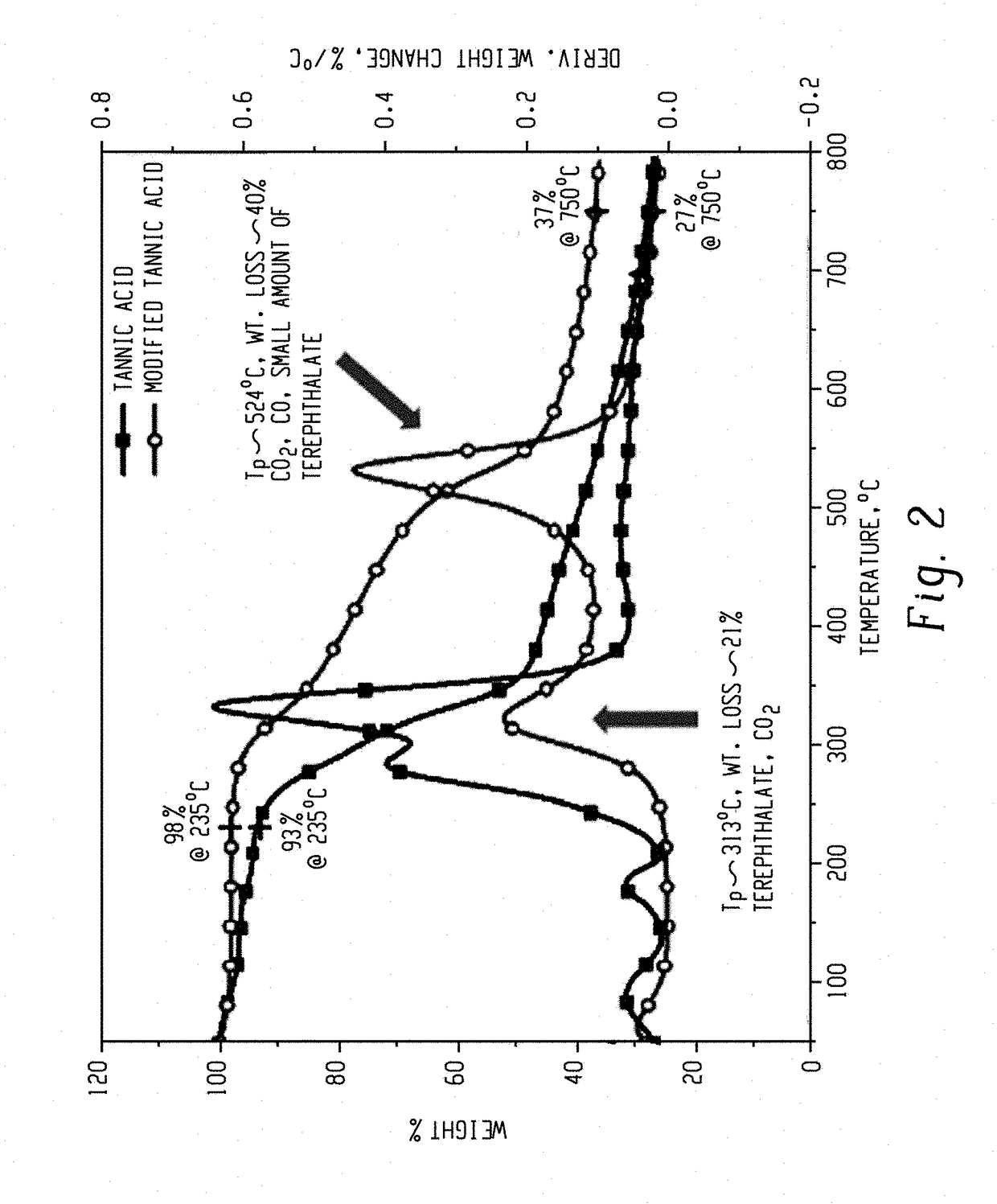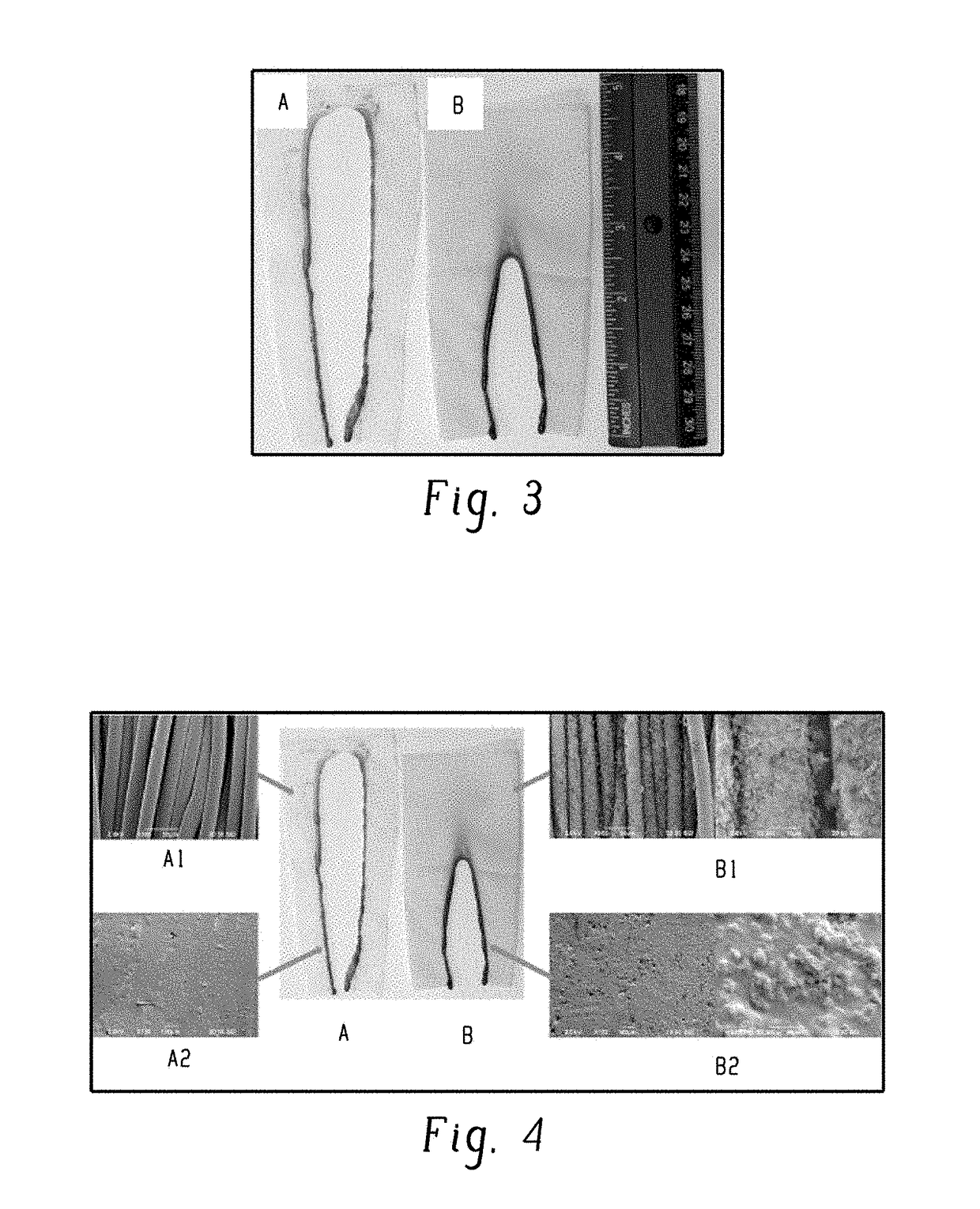Crosslinked phenolic compound, method of forming, and polymer composition containing the same
- Summary
- Abstract
- Description
- Claims
- Application Information
AI Technical Summary
Benefits of technology
Problems solved by technology
Method used
Image
Examples
example 1
of Tannic Acid Terephthalate (TAT)
[0079]0.425 g of tannic acid (TA), 0.15 g sodium hydroxide, and 12.8 mg of phase transfer catalyst tetra-n-butylammonium bromide were dissolved into 25 mL of deionized (DI) water and purged with nitrogen. 0.75 g terephthaloyl chloride was dissolved in 25 ml chloroform in a 100 mL round bottom flask. The chloroform layer was purged with nitrogen prior to mixing with the tannic acid aqueous solution. The reaction was stirred for 15 minutes. The product that precipitated out was filtered and washed with acetone, methanol, and water. The product was dried under vacuum at 80° C. overnight. The yield was about 80% of TAT.
example 2
of Methyl Gallate Terephthalate (MGT)
[0080]First, 0.37 g methyl gallate (MG), 11.1 mg (3 wt % of MG) phase transfer catalyst tetra-n-butylammonium bromide, and 0.48 g sodium hydroxide were dissolved in 25 mL of DI water and sealed within a large test tube. The DI water was vacuumed and purged with nitrogen before use to minimize the oxidation of phenols. 1.22 g terephthaloyl chloride was dissolved in 25 mL chloroform in a 100 mL round bottom flask. The organic phase was purged with nitrogen to minimize oxygen content. Then the methyl gallate solution was poured into the chloroform solution to initiate the reaction. The reaction was stirred for 15 min at room temperature. The precipitate was filtered and washed with acetone, methanol, and water. The product was dried under vacuum at 80° C. overnight. The yield was about 70% of MGT. The dried product was stored in a desiccator.
[0081]MGT can also be synthesized in an organic phase (i.e. acetone) alone using methyl gallate, terephthaloy...
example 3
egradation Evaluation
[0082]Table 2 summarizes the thermal degradation properties of MG, MGT, TA, and TAT as determined by thermal gravimetric analysis (TGA). The char yield is reported at 750° C.
TABLE 2MaterialT5% (° C.)Tmax (° C.)Char yield (%)MG2453075.7MGT27853936.8TA18533327.4TAT29953136.4T5%: the temperature at which 5% mass loss occurredTmax: the temperature at which the maximum mass loss rate occurred
[0083]For both MGT and TAT, the crosslinked product had increased thermal stability comparted to the precursors. For MGT and TAT, the Tmax increased by 232° C. and 198° C., respectively. TAT showed significantly improved T5% over TA, which enabled it to be melt-processable with most plastic materials. MGT and TAT have the highest peak degradation temperatures at around 530° C. because of the thermally stable galloyl-terephthalate structures.
[0084]The thermal discoloration behavior of TA and TAT were compared as shown in FIG. 1. Both TA and TAT maintained their integrity at 175° C...
PUM
| Property | Measurement | Unit |
|---|---|---|
| weight percent | aaaaa | aaaaa |
| length | aaaaa | aaaaa |
| length | aaaaa | aaaaa |
Abstract
Description
Claims
Application Information
 Login to View More
Login to View More - R&D
- Intellectual Property
- Life Sciences
- Materials
- Tech Scout
- Unparalleled Data Quality
- Higher Quality Content
- 60% Fewer Hallucinations
Browse by: Latest US Patents, China's latest patents, Technical Efficacy Thesaurus, Application Domain, Technology Topic, Popular Technical Reports.
© 2025 PatSnap. All rights reserved.Legal|Privacy policy|Modern Slavery Act Transparency Statement|Sitemap|About US| Contact US: help@patsnap.com



